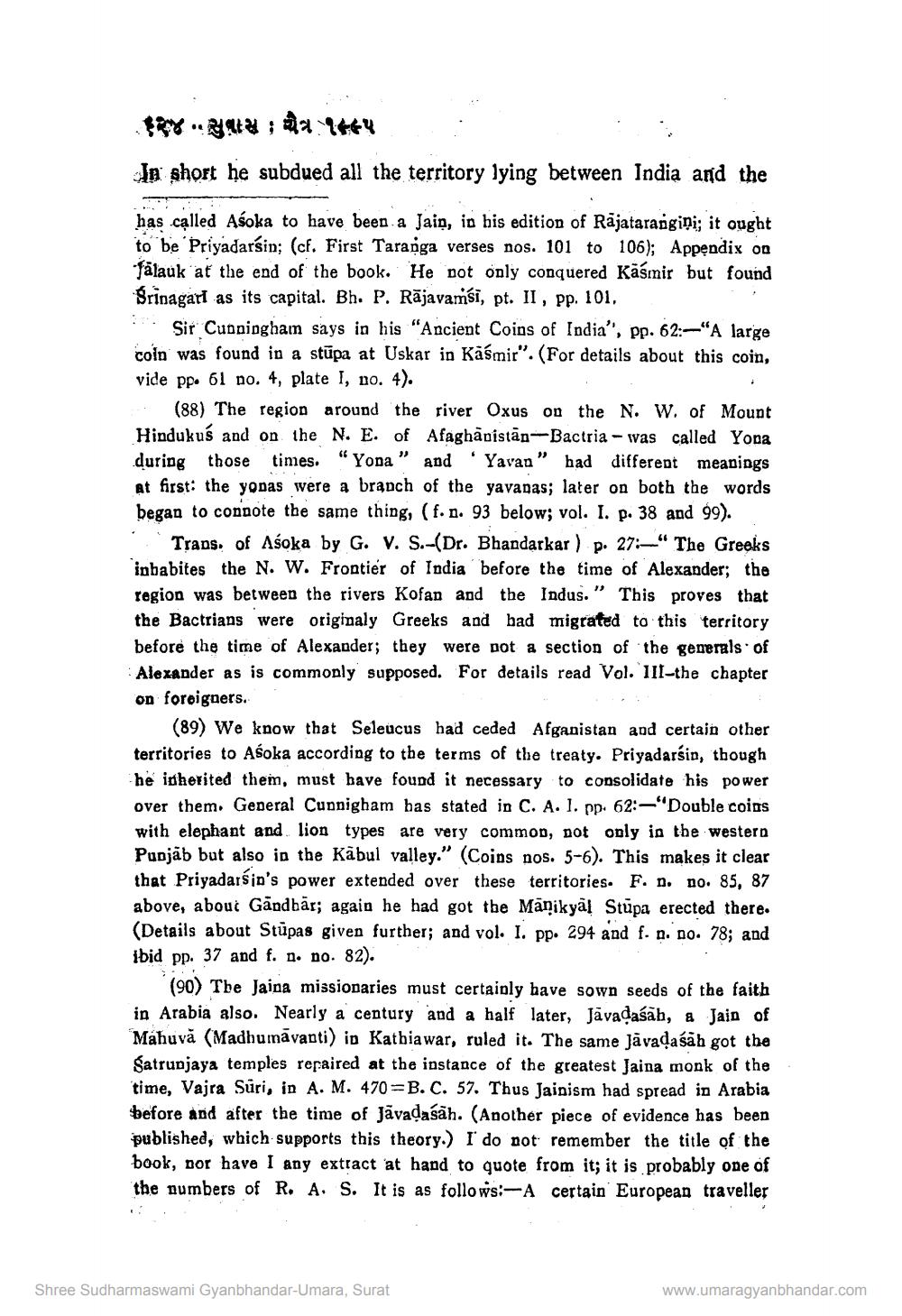________________ R ; 249464 : In short he subdued all the territory lying between India and the has called Asoka to have been a Jain, in his edition of Rajatarangini; it ought to be Priyadarsin; (cf. First Taranga verses nos. 101 to 106); Appendix on Jalauk at the end of the book. He not only conquered Kasmir but found Srinagari as its capital. Bh. P. Rajavamsi, pt. II, pp. 101, 2. Sir Cupningham says in his "Ancient Coins of India', pp. 62:-"A large coin was found in a stupa at Uskar in Kasmir". (For details about this coin, vide pp. 61 no. 4, plate I, no. 4). (88) The region around the river Oxus on the N. W. of Mount Hindukus and on the N. E. of Afaghanistan-Bactria - was called Yona during those times. "Yona " and 'Yavan" had different meanings At first: the yonas were a branch of the yavapas; later on both the words began to connote the same thing, (f. n. 93 below; vol. I. p. 38 and 99). Trans. of Asoka by G. V. S.-(Dr. Bhandarkar ) p. 27:-" The Greeks inhabites the N. W. Frontier of India before the time of Alexander; the region was between the rivers Kofan and the Indus." This proves that the Bactrians were originaly Greeks and bad migrated to this territory before the time of Alexander; they were not a section of the generals of Alexander as is commonly supposed. For details read Vol. III-the chapter on foreigners. (89) We know that Seleucus had ceded Afganistan and certain other territories to Asoka according to the terms of the treaty. Priyadarsin, though he inherited them, must bave found it necessary to consolidate his power over them. General Cunnigham bas stated in C. A. I. pp. 62:--"Double coins with elephant and lion types are very common, not only in the western Punjab but also in the Kabul valley." (Coins nos. 5-6). This makes it clear that Priyadarsin's power extended over these territories. F. n. no. 85, 87 above, abouc Gandhar; again he had got the Manikya! Stupa erected there. (Details about Stupas given further; and vol. I. pp. 294 and f. n. no. 78; and ibid pp. 37 and f. 1. no. 82). (90) The Jaina missionaries must certainly have sown seeds of the faith in Arabia also. Nearly a century and a half later, Javadasah, a Jain of Mahuva (Madhumavanti) in Kathia war, ruled it. The same Javadasah got the Satrunjaya temples repaired at the instance of the greatest Jaina monk of the time, Vajra Suri, in A. M. 470=B. C. 57. Thus Jainism had spread in Arabia before and after the time of Javadasah. (Another piece of evidence has been published, which supports this theory.) I do not remember the title of the book, por have I any extract at hand to quote from it; it is probably one of the numbers of R. A. S. It is as follows:--A certain European traveller Shree Sudharmaswami Gyanbhandar-Umara, Surat www.umaragyanbhandar.com




